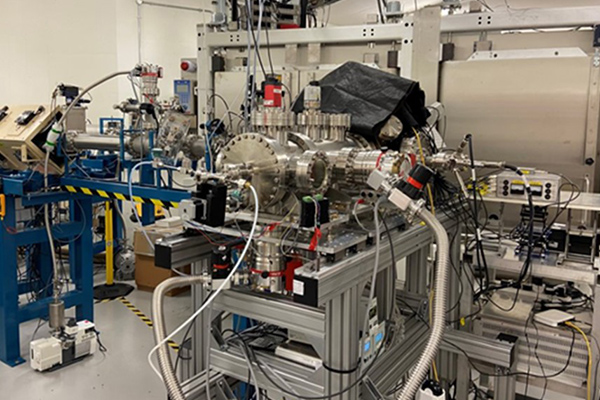Beam dosimetry measurements made with gas jet monitor

A team from the QUASAR Group has been investigating the possibility of conducting non-invasive beam dosimetry measurements at Dalton Cumbrian Facility (DCF), Whitehaven (UK). Non-invasive in-vivo dosimetry is a key goal for medical facilities, as highlighted in the widely recognized “Towards safer radiotherapy” report which was published in 2008. Despite significant efforts internationally to create non-invasive dosimetry, it is not yet sufficiently developed to be available for routine operation.
The QUASAR Group at the Cockcroft Institute has led the design of a novel monitor capable of imaging the proton beam in the High Luminosity Large Hadron Collider (LHC) and the beam in the Hollow Electron Lens simultaneously. This monitor shows excellent prospects for imaging proton and ion beams at clinically relevant energies and intensities as well.
As a part of STFC-funded CLASP project, the design of the gas jet monitor has been adapted and will be optimised for use at medical accelerators. With the additional funding secured from the Faculty Impact Fund project, targeted measurements were made at the Dalton Cumbrian Facility’s tandem accelerator with beam parameters close to a clinical facility. The results are currently being analyzed and will be submitted to a journal for publication in the near future.
As well as the CLASP project, the study is also going to benefit the recently funded £2M conceptual design study into a Laser-hybrid Accelerator for Radiobiological Applications (LhARA). These measurements will inform the design of future facilities such as LhARA which targets short pulse, high repetition rate beam delivery for which online beam monitoring remains an unsolved challenge.